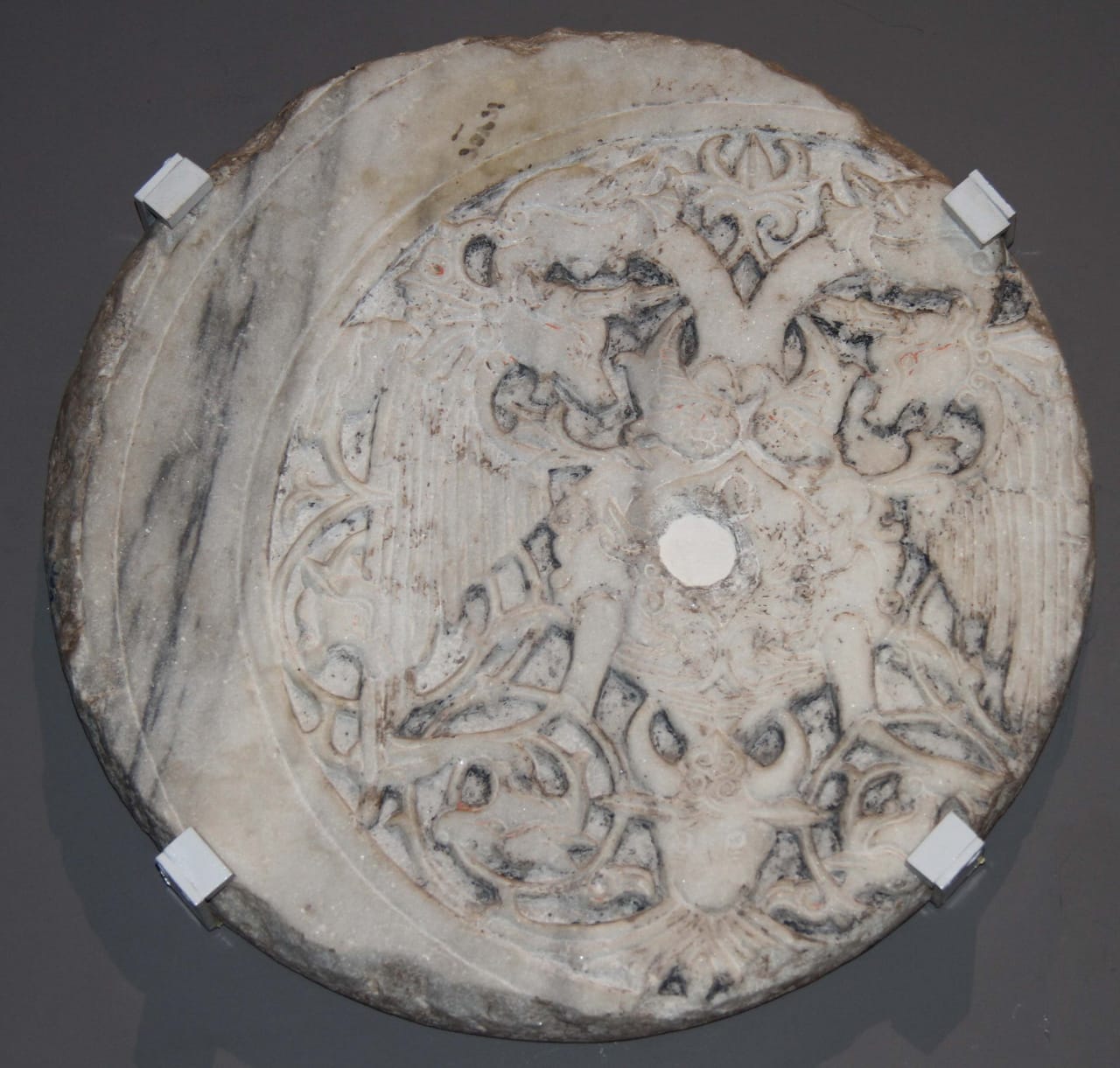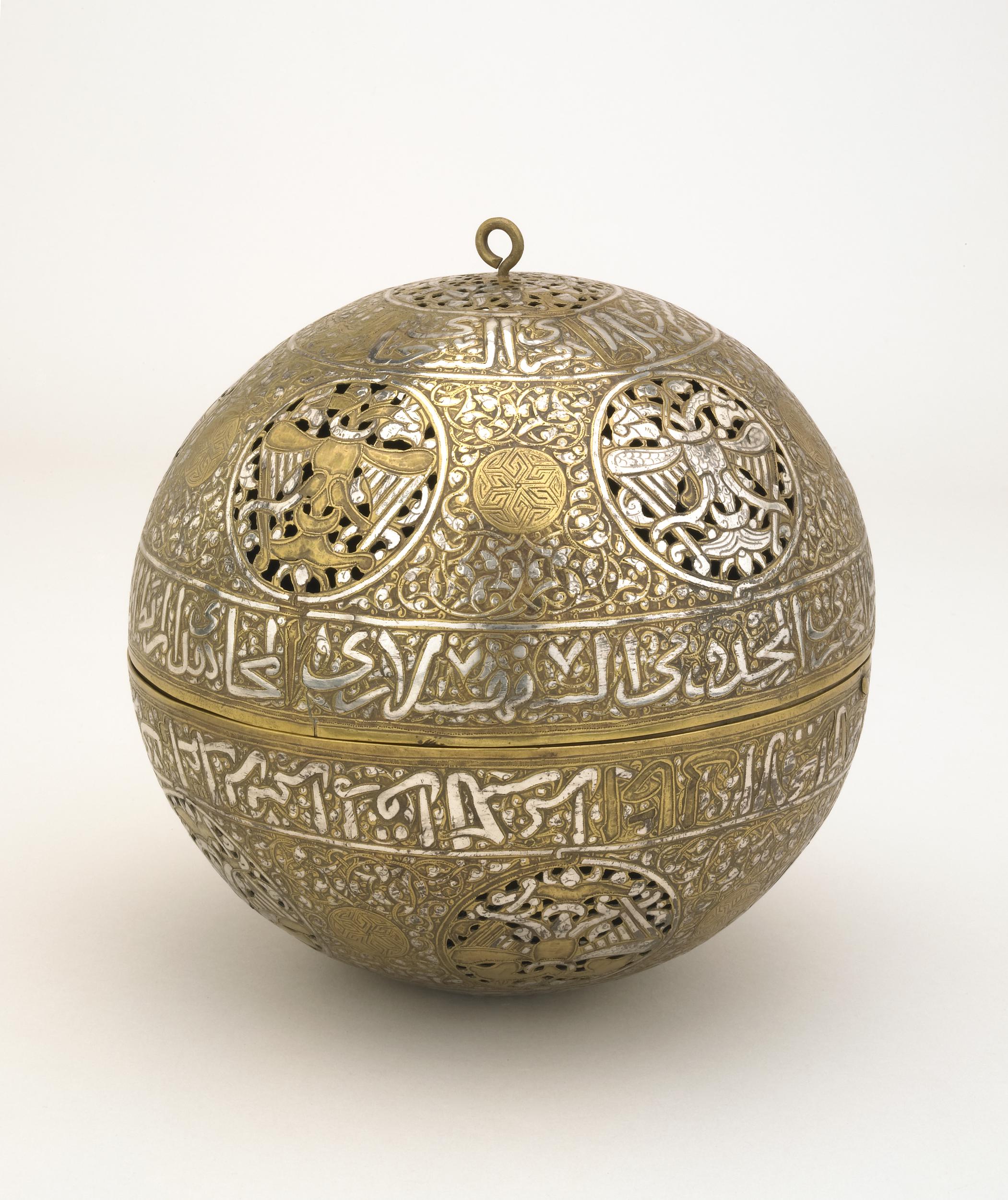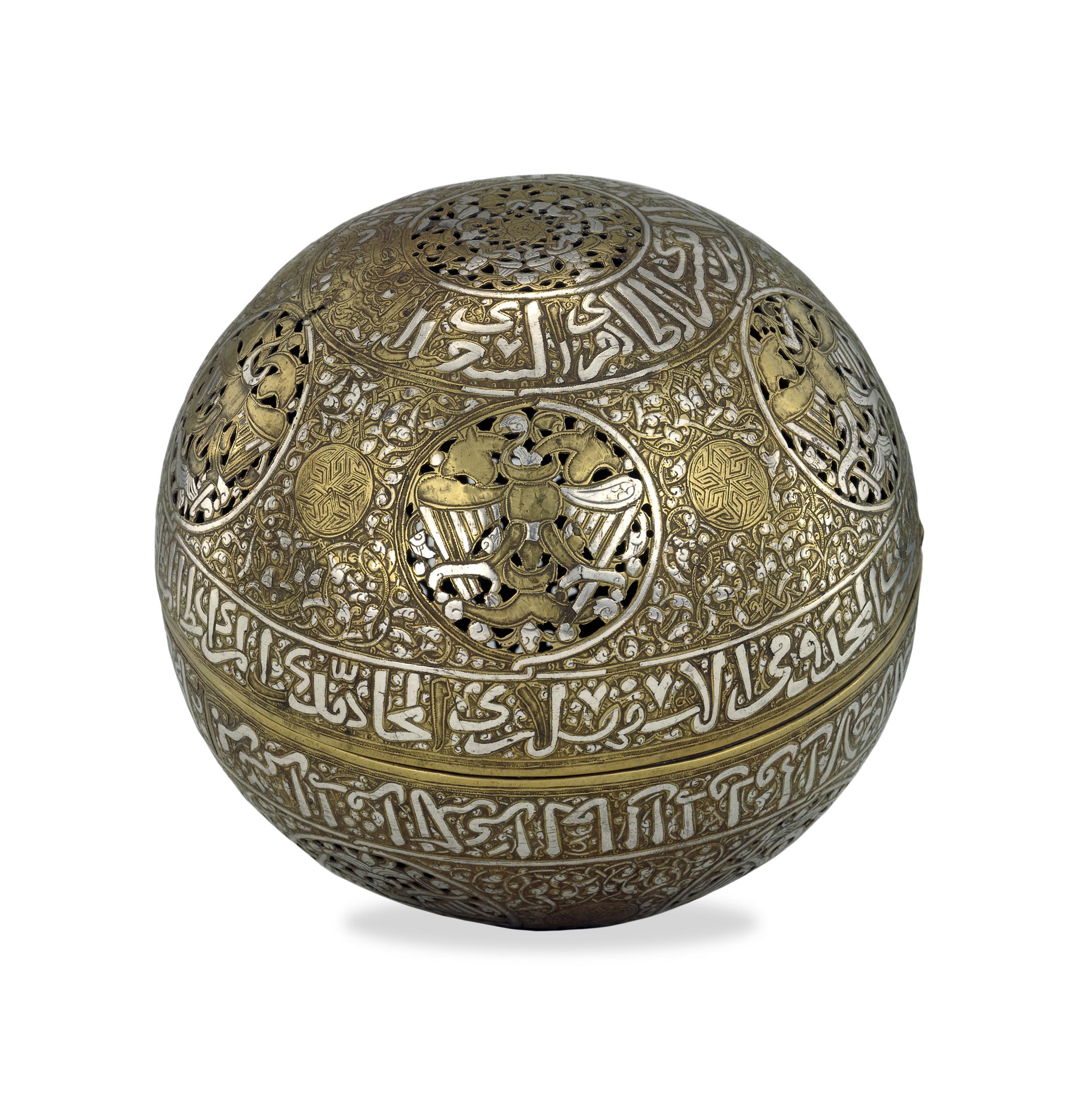A rounded marble fragment decorated with a double-head eagle
Unique ID: A001

- Attribution
- Amir Baysarī
- Place
- Egypt
- Period
- Mamluk period, the 13th century
- Material
- White marble
- Owner
- Museum of Islamic Art (Egypt)
- Collection No.
- 12752
- Description
- This figure represents a leadership symbol of the Zangid era (1127–1251). It became known in Iraq, Anatolia and the Levant and became common in the Mamluk era especially for Sultan Qalāwūn and his entourage. This ornament was modified, as the eagle tail was changed into a buffalo head and the wings into multi-heads of different animals.
- Copyright
- © Museum of Islamic Art
The images of the collection of Museum of Islamic Arts are published with the permission of the museum. - URL
- https://www.miaegypt.org/
- Supplementary Information
- The same two-headed eagle pattern appears on an incense burner named after Amir Baysarī, which is held in the British Museum. There is no other animal in the pattern.


- Owner
- The British Museum
- Collection No.
- 1878,1230.682
- Place
- Egypt or Syria
- Period
- 1277–1279
- Description
- Brass incense-burner; spherical, made of two interlocking hemispheres; cast brass decorated with pierced decoration and silver inlays giving the name of the Mamluk Amir Badr al-Dīn Baysarī.
- Copyright
- © The Trustees of the British Museum
- URL
- https://www.britishmuseum.org/collection/object/W_1878-1230-682